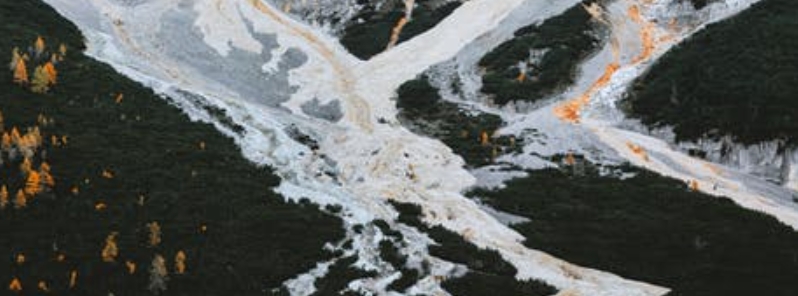Unusual ‘lava’ flow spotted in Himachal Pradesh, India

An unusual "volcanic eruption" took place in the Kullu District in Himachal Pradesh, India, where a lava-like substance was spotted downhill, making rounds on social media on Tuesday, February 16, 2021. According to local reports, there is no history of volcanic activity in the state.
The lava flow occurred in the Lafali panchayat of Anni subdivision in Kullu, which melted the snow and scorched the grass before turning solid. The footage shows a group of officials inspecting the roadside and a burnt and bent pole.
Chet Singh, a subdivisional magistrate in Anni, told Times of India that he had seen the video, which seemed to have been taken a few days ago.
"The pole has been removed," said Singh. "The tehsildar will lead a team into the area on Wednesday (February 17) and only then can we say anything."
S.S. Randhawa, principal scientific officer of the Himachal Pradesh State Center on Climate Change, ruled out a volcanic activity and noted that the uncommon event might be due to either the burning of a carbon shell or tectonic activity as there is no history of volcanic activity in the state.
In 2014, the Kangra District reported a similar event wherein flames and lava steam were emitted out of a hill. State geologists confirmed that it was a small magmatic activity.
While volcanic activity is rare, magmatic flow is not unusual to the state. Hot sulfur springs in Manikaran, Kalath, Vashishth, and Kalath prove that there is magma underneath.

"The Himalayas were formed with 2 400 km (1 500 miles) of magma flow about 50 million years ago," said leading geologist Ritesh Aya. "Magma lies 4 km (2.5 miles) below the Earth, and the new spot is about 2 km (1.2 miles) above the surface, so chances are it's something else but it can even be magma."
Either a high-voltage charge from the transmission line or a lightning bolt that struck the pole may have melted the silicates in the local rock, he added.
"This is actually called fulgurite. It is produced by melting of natural silicates generated through very high temperature by lightning, leakage of high-tension electricity wires. I think here, lightning is the major cause."
Featured image credit: eberhard grossgasteiger/Unsplash

Very interesting observations.
I wonder if the local officials have considered the use of a Geiger counter to check for radiation levels.
Self sustaining nuclear fission reactions can occur and have in various parts of the world.
Himachal Pradesh has previously been studied for natural uranium as there are unexplained higher than expected levels in soil and water in the area.
If there Has been more rainfall or snow melt recently then the water can act like a neutron shield and encourage the reaction to occur which could boil mud and possibly rock to the surface.
Just a thought.